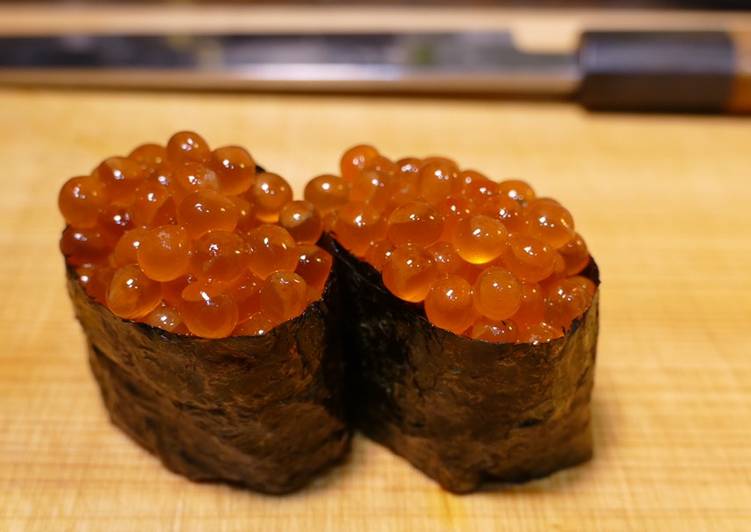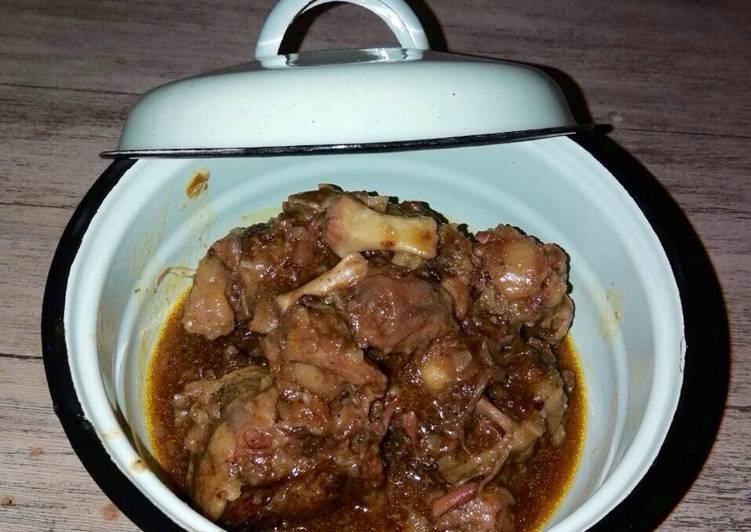
Hello everybody, it’s Drew, welcome to our recipe page. Today, we’re going to make a special dish, how to make【ikura】salmon roe for japanese sushi. One of my favorites. This time, I am going to make it a bit tasty. This is gonna smell and look delicious.
How to turn fresh salmon roe (sujiko - 筋子) into salmon caviar (ikura - イクラ). I go through a few simple techniques for separating the roe from the skein and share my recipe for curing the roe in a dashi-brine. This is how all the best sushi restaurants make their ikura taste so good. Delicate salmon roe or red caviar, also called Ikura (いくら) in Japan, is highly prized by caviar lovers around the world.
How to make【Ikura】Salmon roe for Japanese Sushi is one of the most popular of recent trending meals in the world. It’s appreciated by millions daily. It is simple, it’s fast, it tastes yummy. They are fine and they look wonderful. How to make【Ikura】Salmon roe for Japanese Sushi is something that I have loved my entire life.
To get started with this particular recipe, we have to prepare a few ingredients. You can have how to make【ikura】salmon roe for japanese sushi using 9 ingredients and 12 steps. Here is how you cook it.
The ingredients needed to make How to make【Ikura】Salmon roe for Japanese Sushi:
- Prepare Salmon roe
- Get 【Preperation】
- Make ready Plenty of Salt
- Take Plenty of Hot water
- Make ready 【Marinated Sauce】
- Prepare 1 part : Sake
- Prepare 1 part : Mirin (Sweet sake)
- Prepare 1 part Soy sauce
- Get 5 cm Kombu seaweed
It comes in a membrane sac that holds together all the eggs. This sac must be removed, and the eggs marinated to resemble the ikura that is served in your sushi. Place sujiko in warm water and break the eggs away from the sac. You can remove the fish roe from the salmon, or simply purchase a package of salmon roe.
Instructions to make How to make【Ikura】Salmon roe for Japanese Sushi:
- You need to check that the salmon roe is fresh or frozen when you buy! Must take the frozen step for killing the parasites found in salmon.
- 【The process of removing odors】 Put a lot of salt on all over the salmon roe with membrane in a bowl.
- Fill up boiled water into the bowl (salmon roe with membrane are maximum 4 pieces in a time).
- Stir the bottom with chopsticks hardly, then the membrane comes off salmon roe and roll up on a chopstick
- When you remove all of the membranes, rinse and change water several times until to be clearly.
- ☆The colour changes to be white on this step, it’s going to be back later so don’t worry !!
- Strain it and cover the top then keep it in fridge for a hour.
- 【Marinated sauce】Burn off alcohol from Sake and Mirin (1:1 ratio) perfectly by boiling with fire.
- Stop heating then add soy sauce (Sake1: Mirin1: Soy sauce1) and small piece of kombu seaweed for Umami (^O^)
- 1 hour later, put the salmon roe and sauce into a clean container then leave it for over night.
- Next morning strain it then time for serving!! If you want to froze that should be small wrapping.
- The video for making Ikura is ready on YouTube→【Coozy Life salmon roe】☆
Place sujiko in warm water and break the eggs away from the sac. You can remove the fish roe from the salmon, or simply purchase a package of salmon roe. Fill the formed cup with a spoonful of ikura, careful not to let it spill over. While the smallest ones are the most common in American-style sushi rolls, there are many other types and sizes of fish eggs used in Japanese cuisine. Most fish roe contains several essential vitamins and minerals and is also high in protein and amino acids and low in calories, so it makes quite a healthy addition to any dish.
So that is going to wrap this up with this special food how to make【ikura】salmon roe for japanese sushi recipe. Thanks so much for your time. I am sure that you can make this at home. There is gonna be interesting food in home recipes coming up. Don’t forget to save this page on your browser, and share it to your family, colleague and friends. Thanks again for reading. Go on get cooking!

